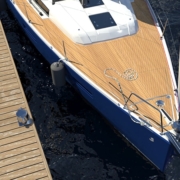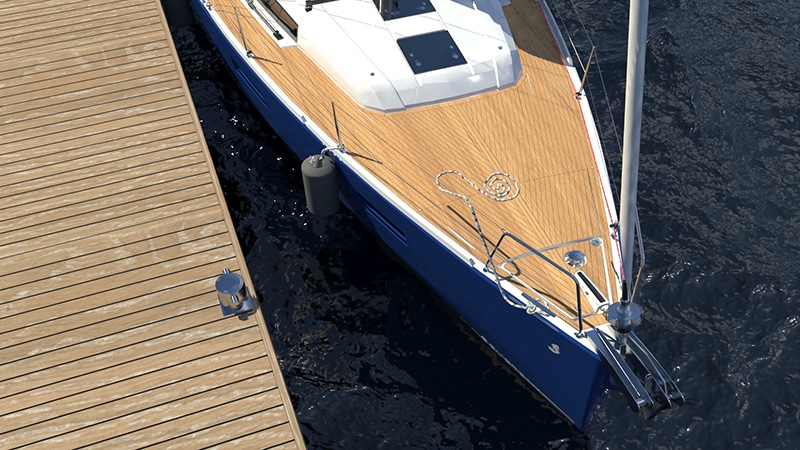Returning a sailboat to the Slip
Time flies when you are sailing. But sadly, the moment comes when you must return and put your vessel back in its slip. Much of what has to be done to return is simply the reverse of what was done to go sailing, but there are some differences and therefore you need a plan.
Considerations:
- Wind and current direction
- Crew assignments
- Docklines ready and none dragging in the water
- Fenders placed appropriately and at the right height off the waterline
- Dinghy positioned, either brought in close behind or alongside
- Fishing lines reeled in (funny haa haa right? No, we are speaking from the experience of many lost lures)
- Check for traffic conditions that might jam up the entrance and the slipway
It is imperative that you as the skipper give clear directions to your crew to set the boat up correctly. Many times the crew will not know the correct height of fenders or which length dock lines go on which cleats. Also, don’t assume that your crew can tie a decent knot. If you set your boat up well, you are going to have fewer issues at the crucial moment of “touch down.” Before entering the marina, give the helm to someone else and take a walk around the boat to ensure it is set up as you prefer.
View this video on how to quickly tie a fender using a clove hitch. Pass this on to your crew.
How to Tie a Clove Hitch Fast
A word of caution: Attempting to sail a 30- to 50-foot vessel into a slip invites serious problems. This should not be attempted by a new sailor. If you are unable to motor into your slip because of engine problems, you might try sailing onto a clear tee head (the end of the dock) where the landing will possibly be a little easier. Performing this maneuver into the wind is a little easier than downwind because stopping the boat in a downwind situation will tend to make you over-shoot. Whatever the case, have plenty of dock lines available and call for assistance from people on the dock. Most are quite willing to help.
Contingency plan: There is always the possibility that space is not available where you thought you were going to park your boat. If this is the case you may find you need to swap sides of fenders and dock lines. Sometimes when going into an unfamiliar harbor, it is prudent to set dock lines to both sides.
Here is a really good blog we wrote about docking. It has some gems.
Docklines Ready
Prepare the docklines so that they run from the boatcleat then outside the boat and then back onto the boat over the top of the lifelines. In this manner, when the dockline is tossed from the boat to the dock, the dockline will not tangle with the lifeline. It will run straight from the boat cleat to the dock. As a skipper, the most disappointing thing that can turn a perfect glide approach into a quick disaster is to have the crew set up a dockline so that they tangle with the lifeline right at the critical moment when you need the boat secured fast.








